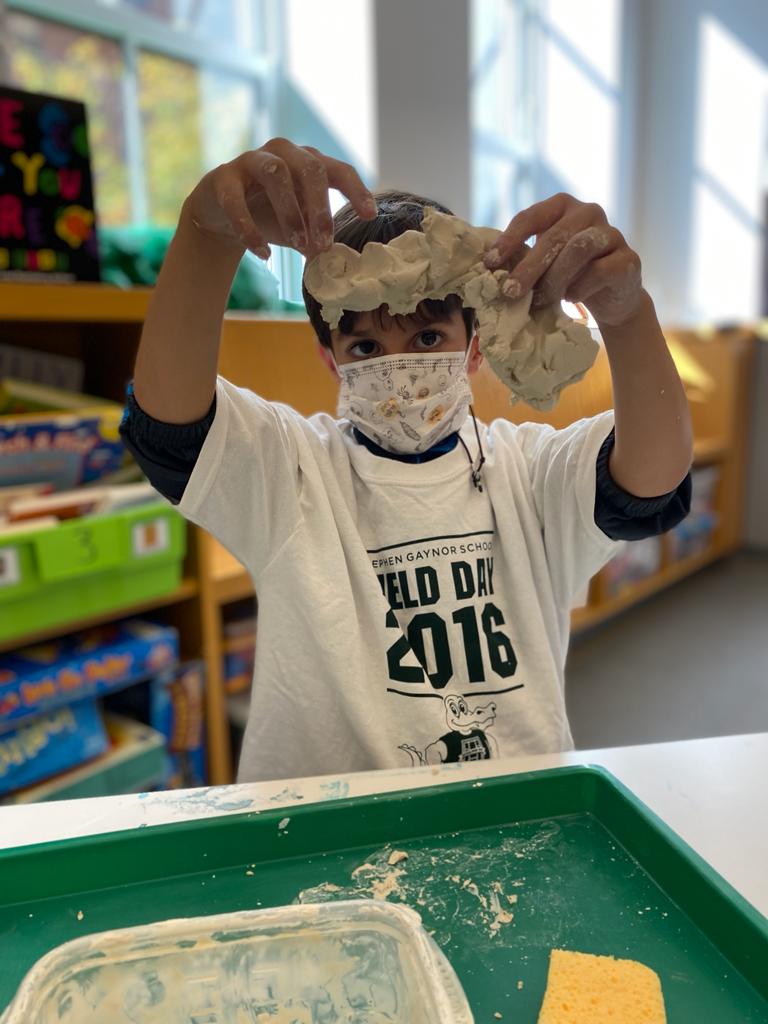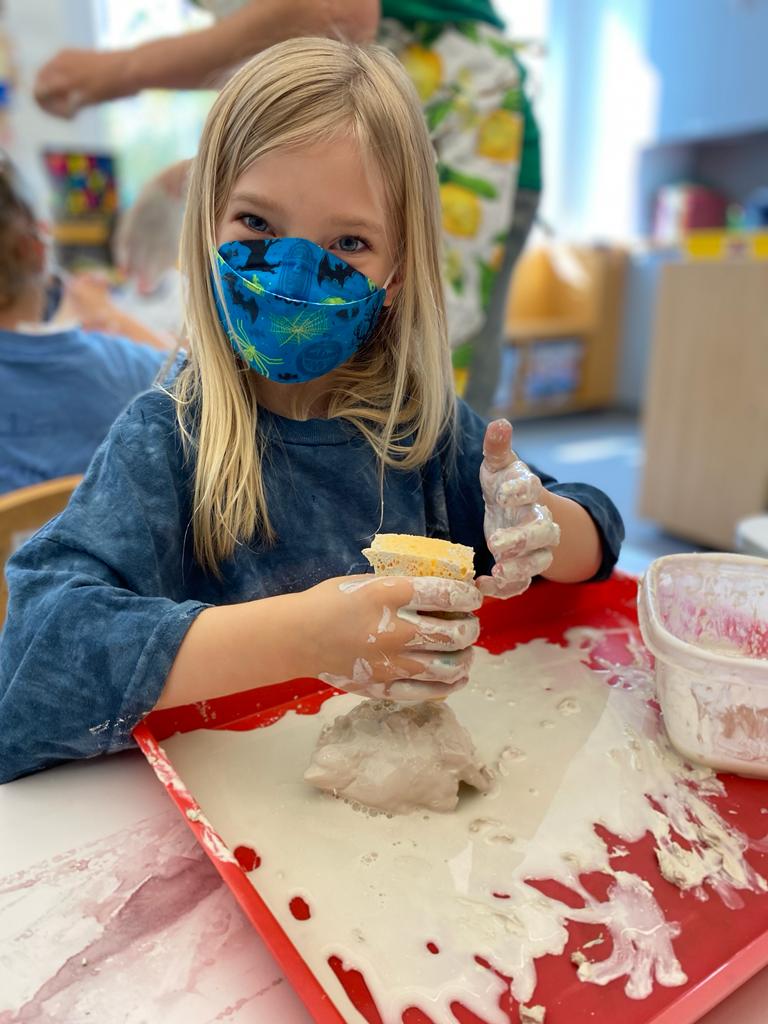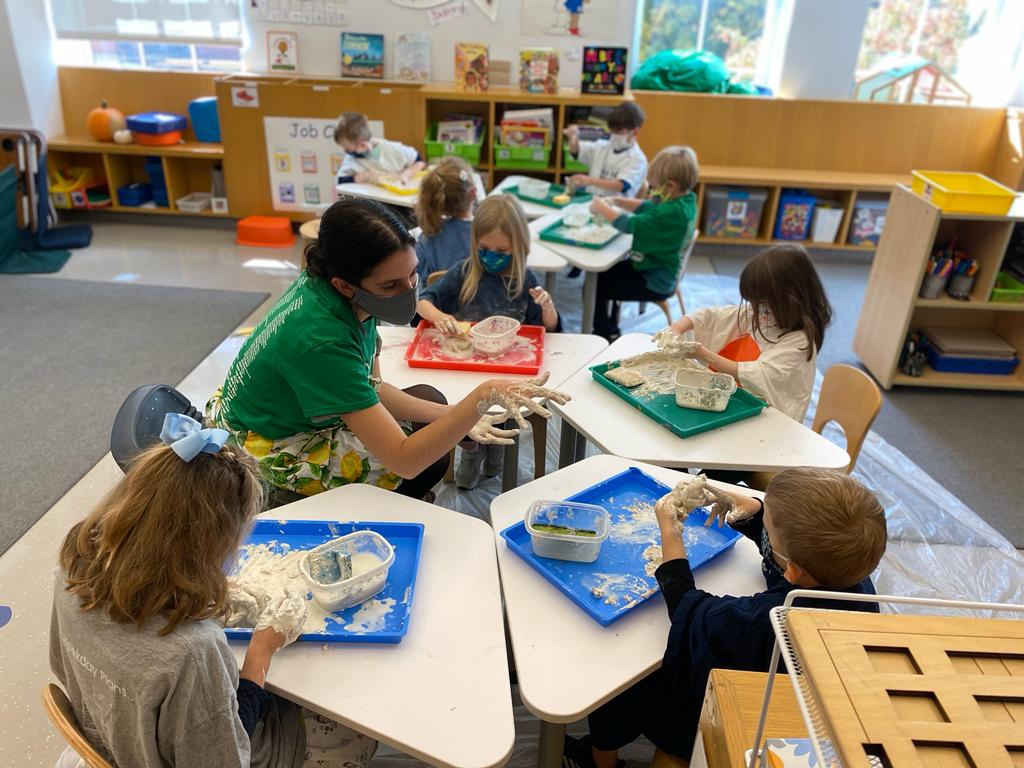 Early Childhood students got down and dirty this week during their collaborative art class. The lesson was focused on exploring air-dry clay using all the students’ senses.
Early Childhood students got down and dirty this week during their collaborative art class. The lesson was focused on exploring air-dry clay using all the students’ senses.
Hudson and Lexington Room students experimented with how water changed the way the clay felt, including turning it into a liquid. They used different parts of their bodies to make various designs or textures, and they all shared their findings with each other, inspiring their classmates to try new techniques.
This activity provided students with a unique sensory experience, allowing them to first feel the clay, and then make the decision to add or not add water.
EC Head Teacher and Art Specialist Rachel Fell said incorporating this kind of decision making is important, because it provides an opportunity for students to exercise control.
 “So much of young children’s days are determined, and controlled, by adults,” she said. “It’s so important for them to have opportunities like this to have agency over a material and activity to develop their own self-confidence.”
“So much of young children’s days are determined, and controlled, by adults,” she said. “It’s so important for them to have opportunities like this to have agency over a material and activity to develop their own self-confidence.”
She said students were also able to try out their own ideas, independently problem solve, and make new discoveries.
“They learn how to trust their own process and all that they can do and learn,” Ms. Fell said. “I purposely do not give a ‘how to’ on how to use the material, as I want them to make their own observations as they work.”
Making the activity a collaborative experience with their peers also allows students to share these discoveries with each other in order to encourage learning together. At the end of the class, students put back any usable clay into the bin to emphasize that this activity was about the process of exploring, not the product of what is created. 
“Children gathered at the end to share how they felt while they were exploring,” Ms. Fell said. “They also equally enjoyed cleaning up their very messy classrooms as part of their process. Every part of collaborative art – from the introduction to the materials to the clean-up – is equally important in giving students control and responsibility in their classroom community.”
